If you’re looking for a friendly, hardy, and excellent egg-layers chicken breed, then the New Hampshire Red may be the one for you! This breed is a popular choice for backyard chicken keepers because of its dual-purpose ability to lay large quantities of eggs and provide a good table meal.
They are hardy in harsh winters and handle confinement well and free-range environments. They are known to be one of the most manageable chickens to care for, which makes this an excellent choice for beginner chicken keepers while still finding them in the most experienced owners’ flocks.
Let’s get to know this wonderful breed a bit better.
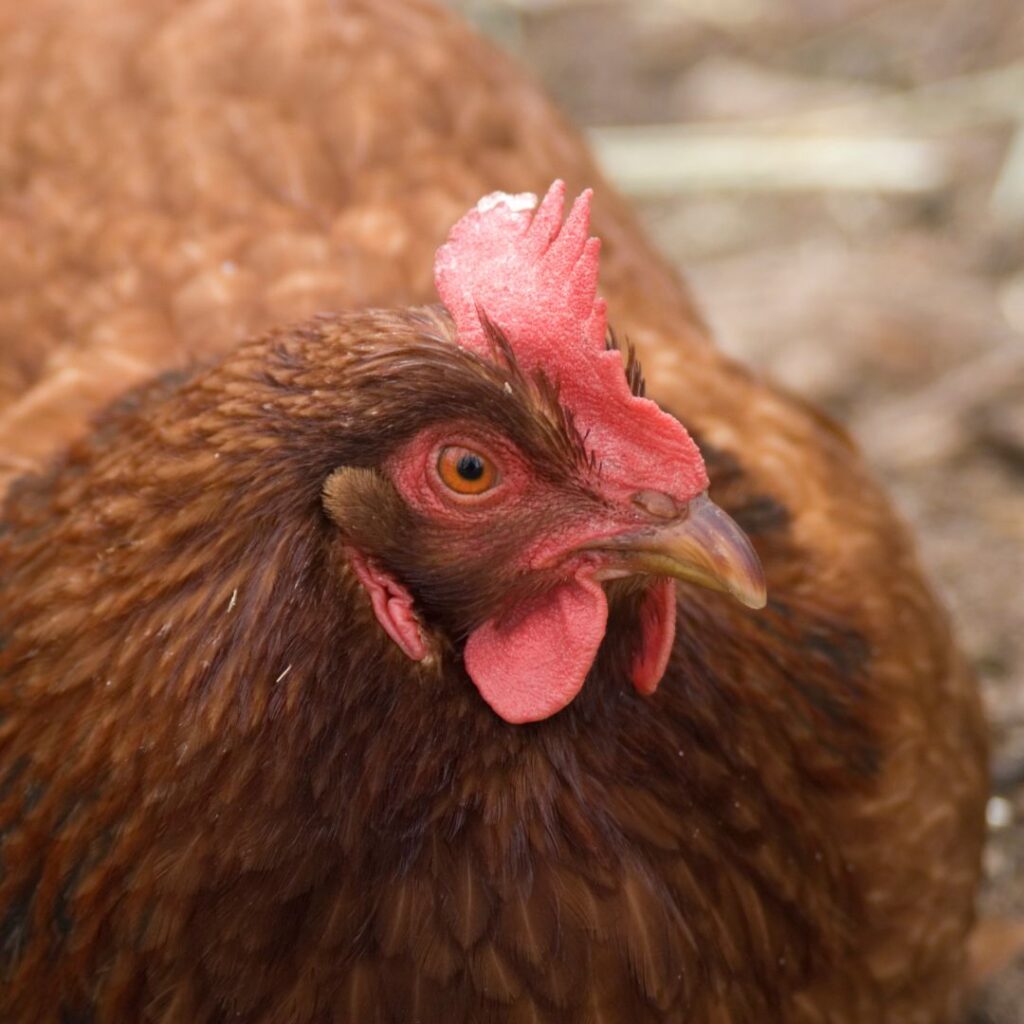
The History of New Hampshire
The New Hampshire Red chicken breed was first developed in the early 1900s
Despite some of its looks, the New Hampshire Red breed is not ancient, having been around for less than one hundred years. It was created when Rhode Island Red strains were intensively selected in New Hampshire and Massachusetts for hens that feathered quicker and grew larger faster, thus giving it the name New Hampshire.
The man to thank for creating this rapid-growth poultry breed was Professor “Red” Richardson, who made the breakthrough to develop it into its species.
Developing the New Hampshire red breed took a lot of hard work and time, starting in 1910. It was in 1918, however, that the breakthrough finally happened, and little by little, this new, improved bird was refined and perfected over numerous generations.
The result was so distinguished from its ancestor, the Rhode Island Red, that in 1935 it was officially accepted as a separate breed by the American Poultry Association.
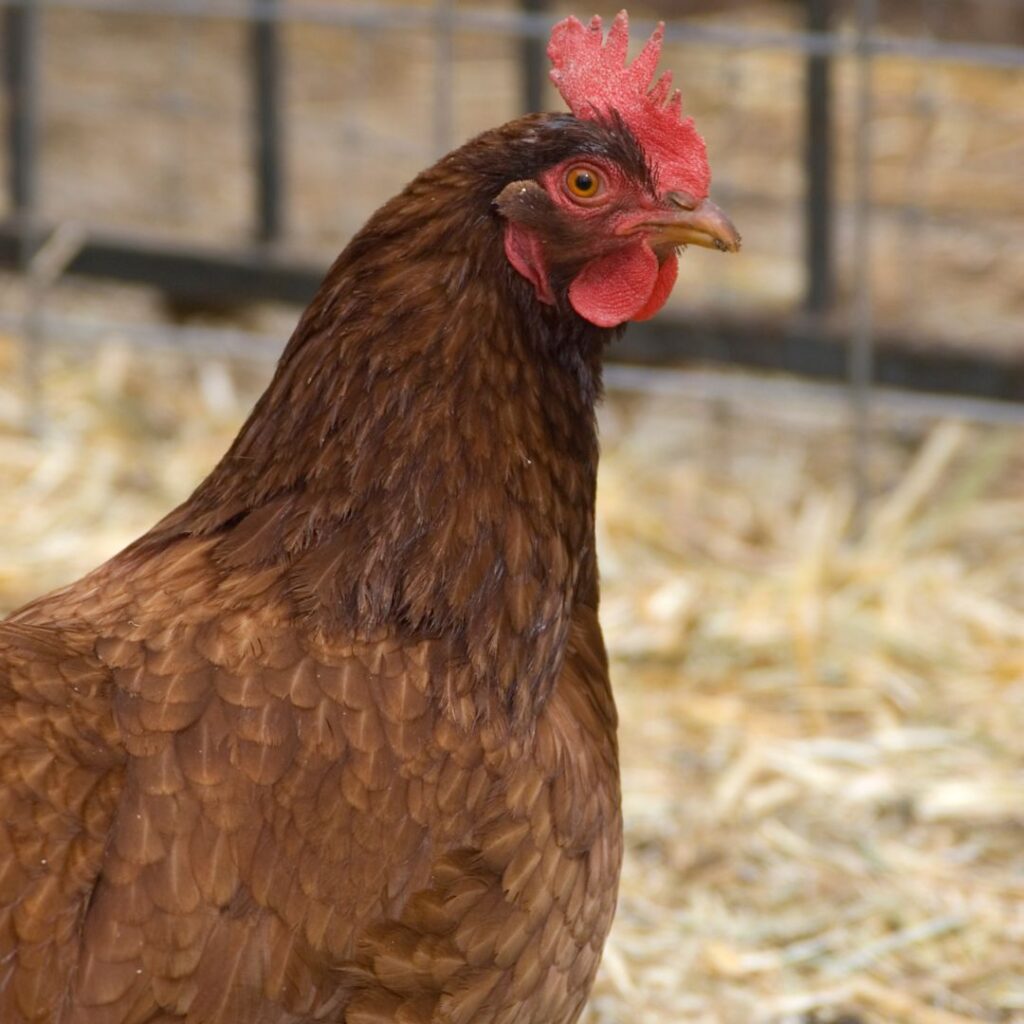
The result was an excellent egg layer with a deep red coloration. This relatively new breed quickly gained popularity among poultry farmers due to its superb egg-laying abilities.
It has become a staple in modern-day poultry farming due to its fast growth rate, hardiness, and ability to adapt.
Fun Fact: In 2018, a group of school children petitioned to have this breed named the New Hampshire Red Chicken named their official state bird. Special Thanks for this historic contribution goes to the students of the Canaan elementary schools.
New Hampshire Breed Appearance
The U.S. American Poultry Association (APA) having accepted this breed in 1935, has set the standards for this breed.
With a feather color closer to a chestnut (orangish-brown) than mahogany (reddish brown), and sometimes with pale golden yellow highlights, New Hampshire chickens can be stunning creatures. As the sun bleaches out their feathers, they may become even lighter.
Pin feathers generally show a reddish-buff or salmon coloration. Males’ have black tail feathers, while hens often have black tipping on their neck feathers and wings.
Both genders feature beautiful orange eyes and beaks that range between red and horn colors. The skin beneath the feathers is yellow. To top it off, they have single combs – more prominent in size for males and often flopping over in females – and four yellow toes connected by a reddish line running from clean leg to toes completing the New Hampshire breed’s distinctive look.
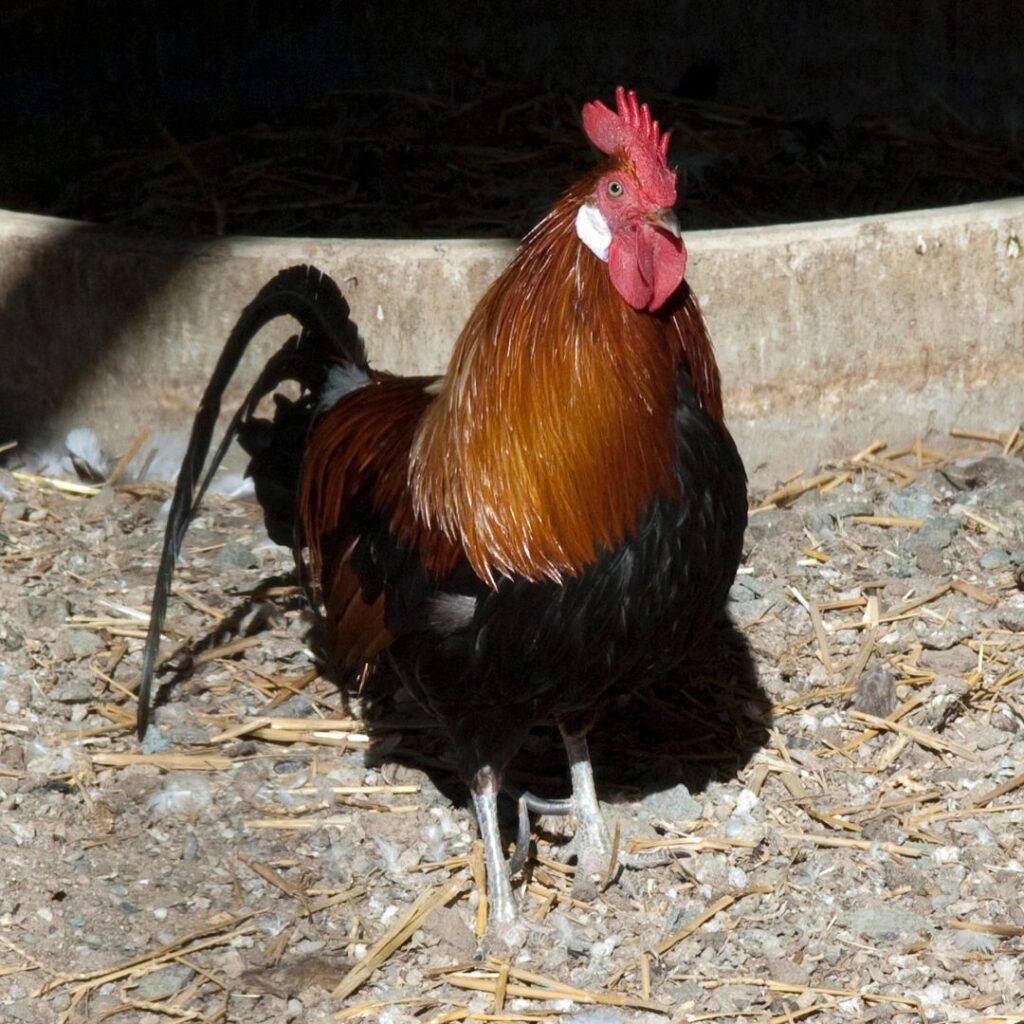
Fun Fact: The New Hampshire Red chickens can be found in heritage and traditional strains. The American Livestock conservancy works diligently to save and preserve heritage breeds from becoming extinct. You can find more about this fantastic organization (click this link), learn about its history and see a lot of extraordinary chickens they’ve been instrumental in saving.
What do Baby New Hampshire Chicks Look Like?
New Hampshire baby chicks are adorable, no doubt about it. Enjoy the cute moment; it goes by quickly. With this breed being developed for fast growth, you could blink and have a feathered bird in the blink of an eye!
New Hampshire Hens; Egg Production
This breed was produced primarily for its egg-laying abilities and then secondary for its meat. Being a dual-purpose chicken, the hens lay an impressive amount of eggs.
When do they start laying eggs?
Hampshire hens are known for their production capabilities, laying approximately 3 to 4 eggs per week and 200-280 large to extra large brown eggs a year. Most breeds usually start laying eggs between 18 and 20 weeks as they reach maturity; however, some may take longer. Yes, New Hampshire Red’s are good winter layers too. A Hampshire hen’s egg production will remain consistent for the first two to three years but gradually decline by about 10% yearly.
The color of the eggshell they produce is almost always medium brown, but hens have been known to lay both lighter or darker brown colored eggs as well. Hampshire hens truly make a superior choice for those who desire nutritious and delicious eggs right from their backyard!
You can find out more about all the reasons hens stop laying here.

The Size And Color Of New Hampshire Chicken Eggs?
Check the source you purchase your chicks or pullets from. However, most New Hampshire hens will lay large to extra-large eggs.
The New Hampshire chicken egg color depends on the parent lines but is always brown. They are most commonly medium brown, but some hens lay light or dark brown shell color.
The brown egg size is large to extra large. Hens often starts laying small eggs, then increases in size over the first few weeks. Your egg laying and size will be consistent inside of a month.
How many eggs does The New Hampshire Hen Lay?
As the lines of this New Hampshire chicken breed have improved over the past 100 years, so has their egg production. Hatcheries are breeding Hampshires that lay up to 280 eggs a year.
The average ‘modern’ day New Hampshire chicken lays 200-280 eggs a year at a rate of approximately four eggs a week (per hen).
With this many eggs, clean and store eggs for maximum health and freshness properly.
Are Hampshire Chickens Good Mothers?
Not all Hampshires are as ‘broody’ as other breeds. However, if you start with a flock of a dozen hens with a rooster, you’ll most likely have one or two with strong instincts to hatch eggs. You can read more about the best and worst broody hen breeds here.
These hens are good mothers when allowed to hatch their young. You can quickly reproduce your flock for generations to come.
Of course, the rooster needs to be there for baby chicks to occur. Be sure only to have one rooster for every ten or more hens. Read more about the most popular rooster breeds here.
Are New Hampshires A Dual Purpose Breed?
The New Hampshire chicken was bred to be a dual-purpose chicken. While their egg-laying is impressive, you can also quickly raise these chickens for meat production. They are much meatier than the Rhode Island Reds.
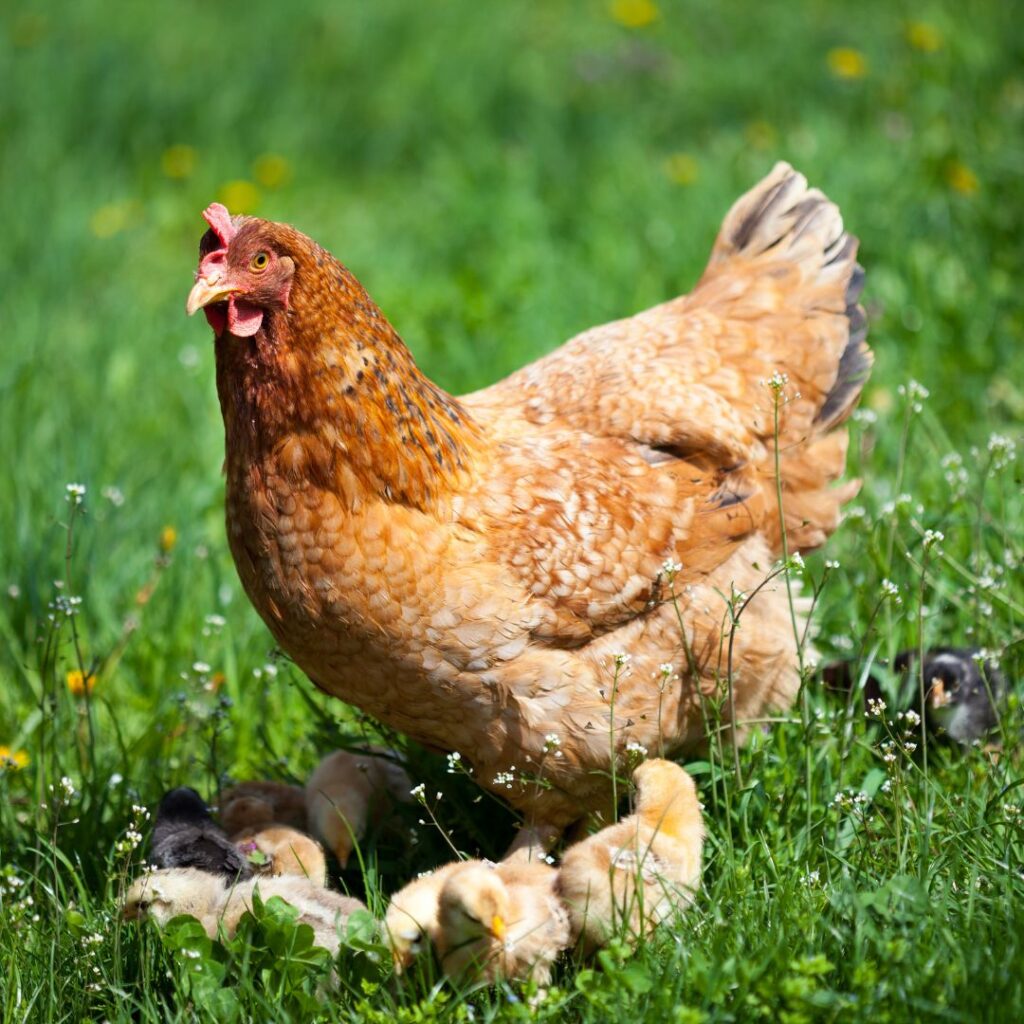
Are the New Hampshires Friendly Birds?
If you’re looking to invest in some New Hampshire chickens, you should be aware of the varying temperaments of these birds. Their personalities can run the gamut from friendly and curious to aggressive and territorial.
The New Hampshire rooster is known for being “food aggressive” with other breeds. They can also be highly aggressive during mating season, as well as if they feel ‘threatened’ by a person, predator, or even a loud noise.
New Hampshire hens are not necessarily aggressive but can be more assertive with hen pecking as they are near the top of the pecking order.
Knowing the New Hampshire chicken background will help you ensure your flock is in an environment conducive to healthy growth and avoid unfortunate run-ins with aggressive birds.
New Hampshire chickens can be an invaluable addition to any homestead or hobby farm, but it is important to take the time to consider their
personalities.
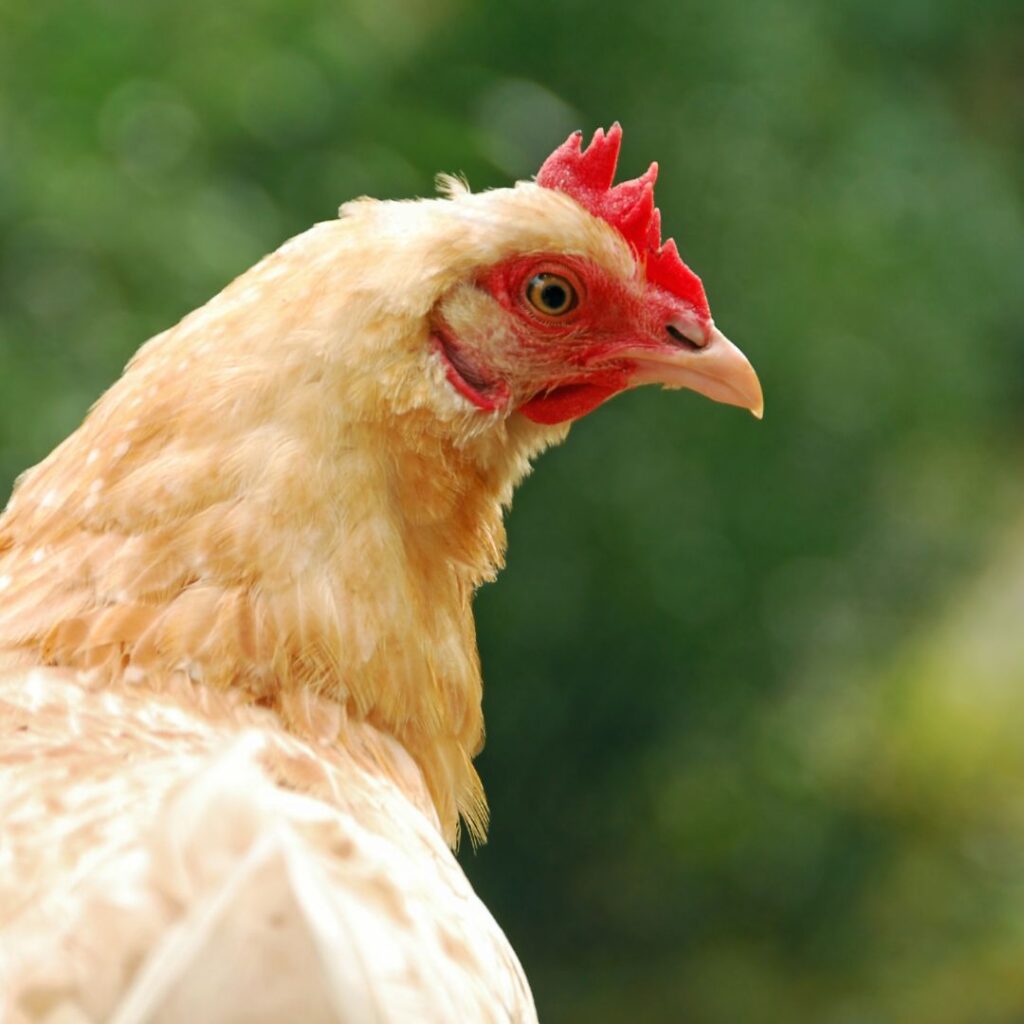
Are New Hampshire Chickens Noisy?
New Hampshire chickens’ have an enthusiasm for vocal communication. These birds love to talk and squawk, sometimes making them a little too loud for urban settings. These birds are known for being very vocal with their loud squawks and crowing roosters.
Although this trait may add some excitement to your farm, you’ll want to consider other breeds if you don’t want to deal with the noise they produce. However, if you embrace the loud personalities of New Hampshire chickens, they may be the right fit for your flock!
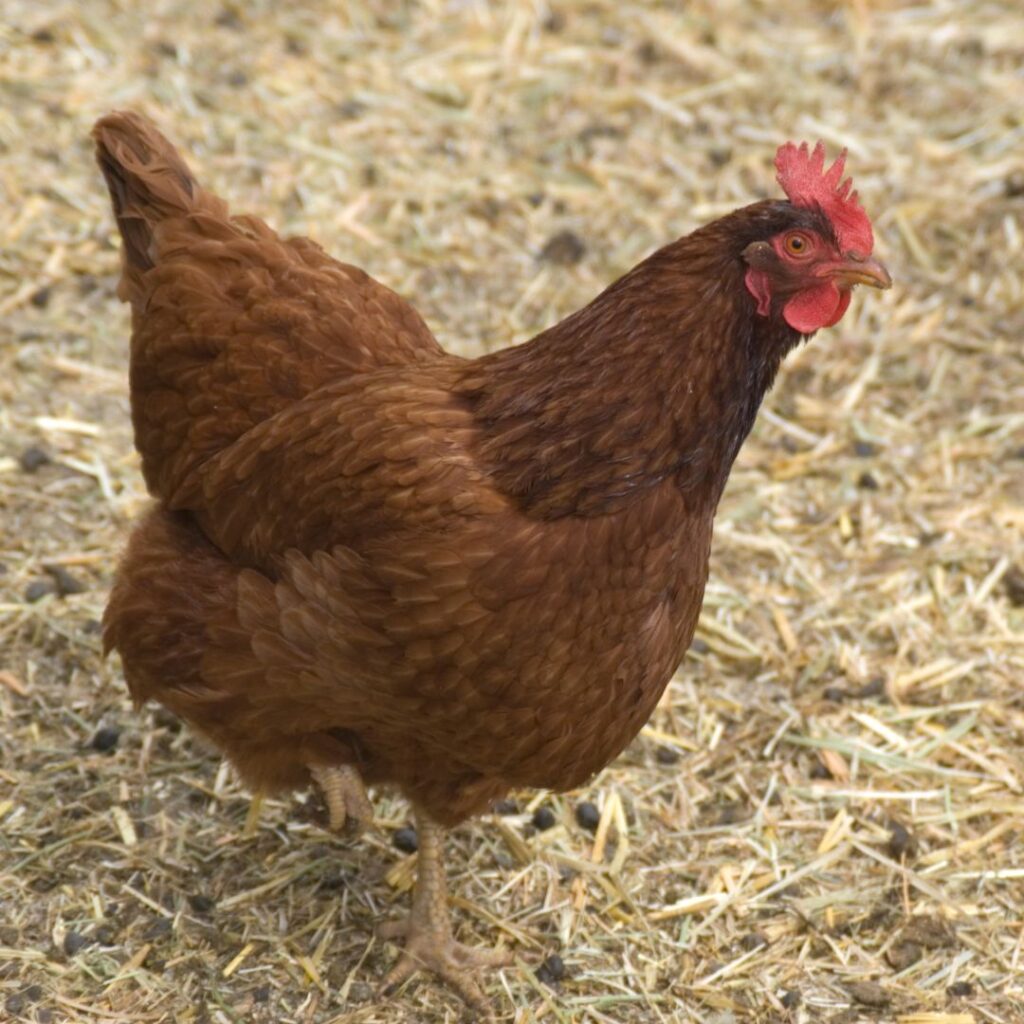
Rhode Island Red Vs. New Hampshire Red Chickens
Rhode Island Reds and New Hampshire Reds are both popular breeds of chickens, but there are a few noticeable differences between the two.
Firstly, their color varies significantly – Rhode Island Reds have deep mahogany red feathers, while New Hampshire Reds tend to be a lighter red-brown or orangish brown.
You can already see this difference in coloring from one-day-old chicks; New Hampshire Reds will appear light reddish-brown, while Rhode Island Reds will appear a darker brown.
In terms of size, they’re very similar – both ending up between 6-8 lbs – however, New Hampshire Reds are usually broader (hence the better meat bird), whereas Rhode Island Reds are less broad.
Their growth also varies slightly as New Hampshire chickens typically mature more quickly than Rhode Island Red chickens.
Fun Fact: The New Hampshire Chicken and the Rhode Island Reds are named ‘state’ birds.
Breed Variations of the New Hampshire Chickens
The Entente Européenne also recognizes two other colors:
- White Hampshire Chicken
- Blue-Tailed Red Hampshire Chicken
The White was bred in Germany in 1954 while also being developed in the U.S. around the same time.
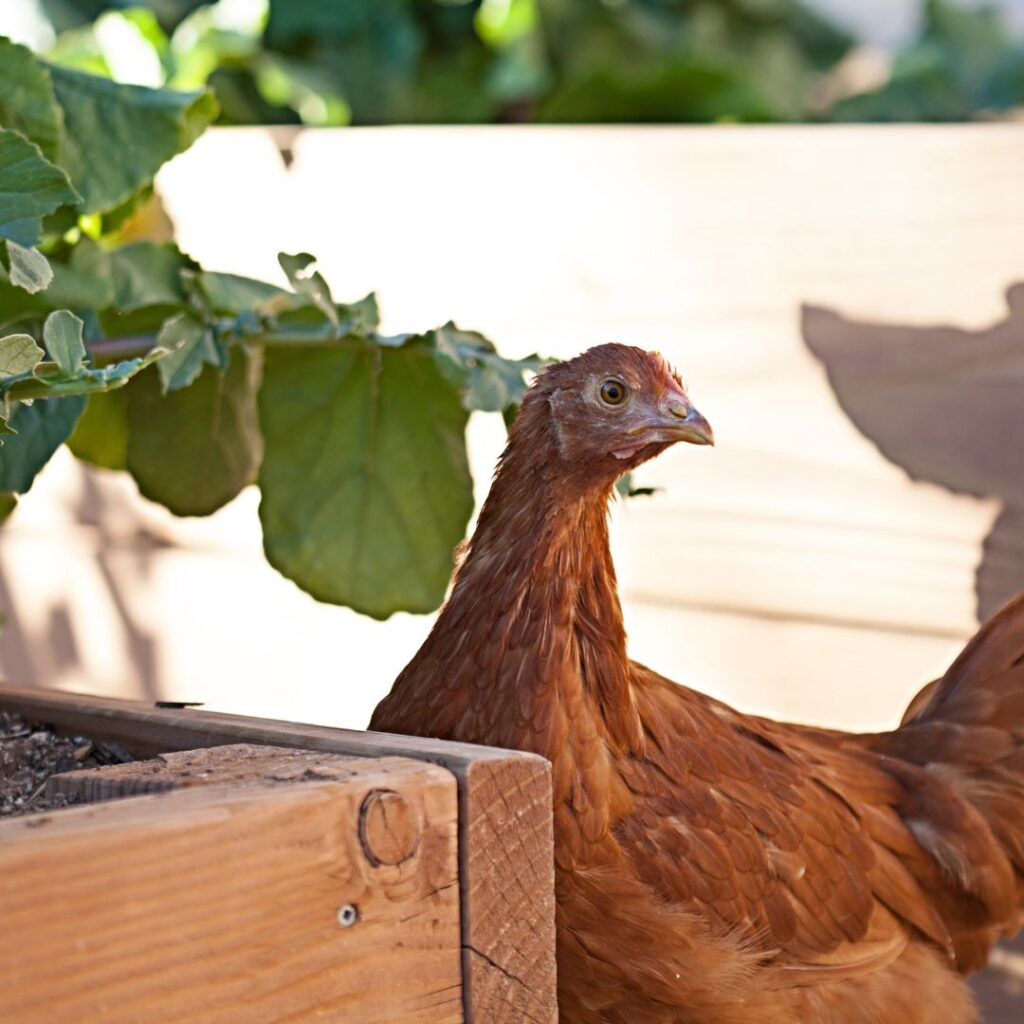
Breed Contributions
Delaware Chicken breeds were developed using the hens from the New Hampshire breed with the rooster from the Barred ‘Plymouth’ Rock breed in the 1940s.
Hybrid Chickens
The New Hampshires are sometimes used to develop sex-link chickens. The Rhode Island Red is often used in these sex links to develop a peak egg-laying chicken breed. Some hatcheries use the New Hampshire chicken instead of the Rhode Island Reds. All of these strains lay eggs in record amounts. Some of these sex links can be found under names like:
- Black Sex Links
- Black Stars
- Golden Sex Links
- Golden Comets
- Cinnamon Queen
- Red Sex Links
- Red Star
- ISA Brown
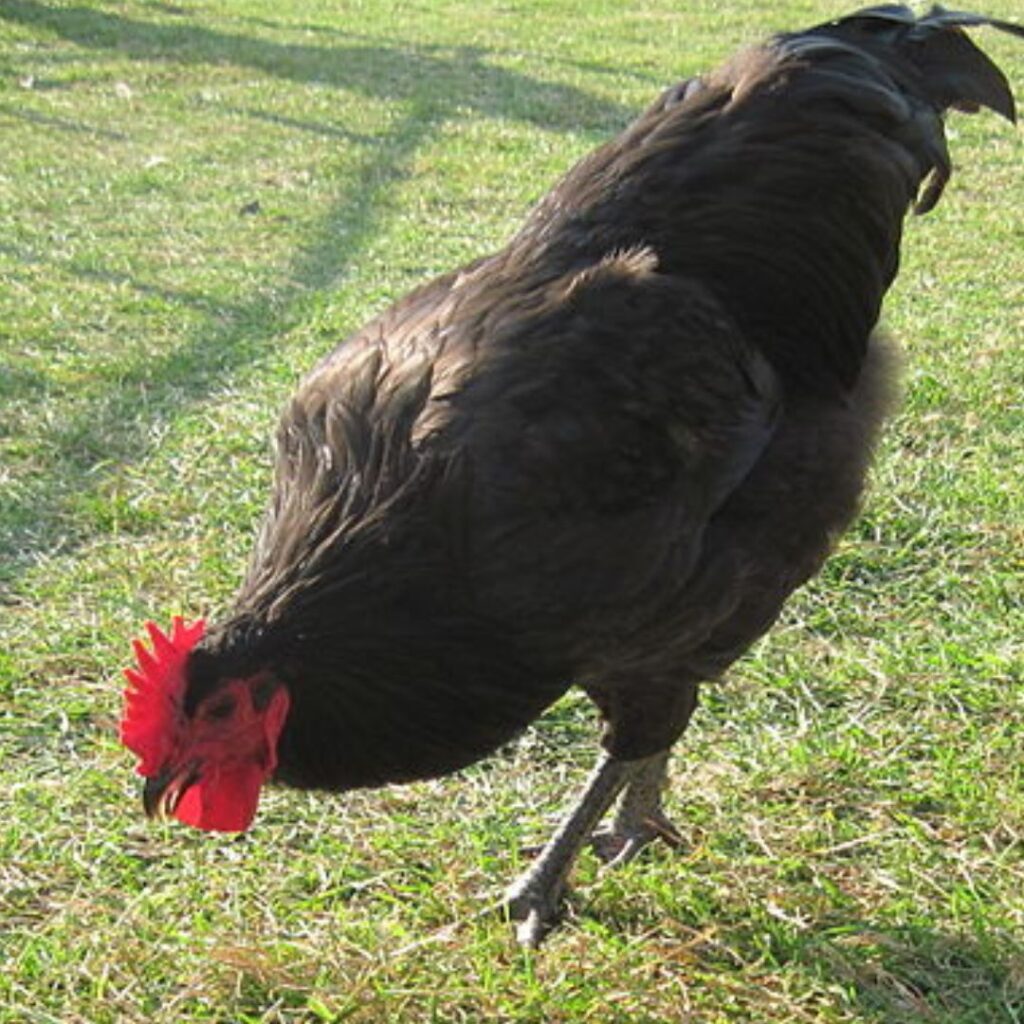
New Hampshire Red Bantams
American bantam association classifies N.H. Bantam as it as a clean-legged and single-comb breed
The New Hampshire Red Bantam possesses all the best qualities of a standard New Hampshire chicken in a miniature breed size. These birds have deep red-orange plumage, making them beautiful as ornamental birds or pets.
Cockerel weight 30 oz. Pullet weight 26 oz
Despite their small bantam size, just like the standard breed, they feather out and mature faster. They are cold-hardy breeds that will lay approximately 150 cream-colored to light brown bantam size (slightly larger) a year.
The Chicken Coop Size for New Hampshire Chickens
New Hampshires are easy to care for, as they don’t require much upkeep or attention.
They can adapt quickly to any environment, whether it be hot or cold weather conditions, provided that adequate shelter is provided during the harsh winter months.
Chicken coop preparation is pretty much the same as the Rhode Island Red.
Space
Each chicken needs approximately four square feet of living space inside the coop, and anticipate needing ten to fifteen additional square feet per chicken in an outdoor run.
For optimal chicken care, the coop should be well-ventilated and easy to access for cleaning.
Roosts
This is where your New Hampshire chicken flock will rest and sleep. Provide eight to twelve inches of roosting space for each bird in your flock. Roost can be placed towards the back of the coop, away from drafts. Place roosts approximately 2-4 feet above the floor.
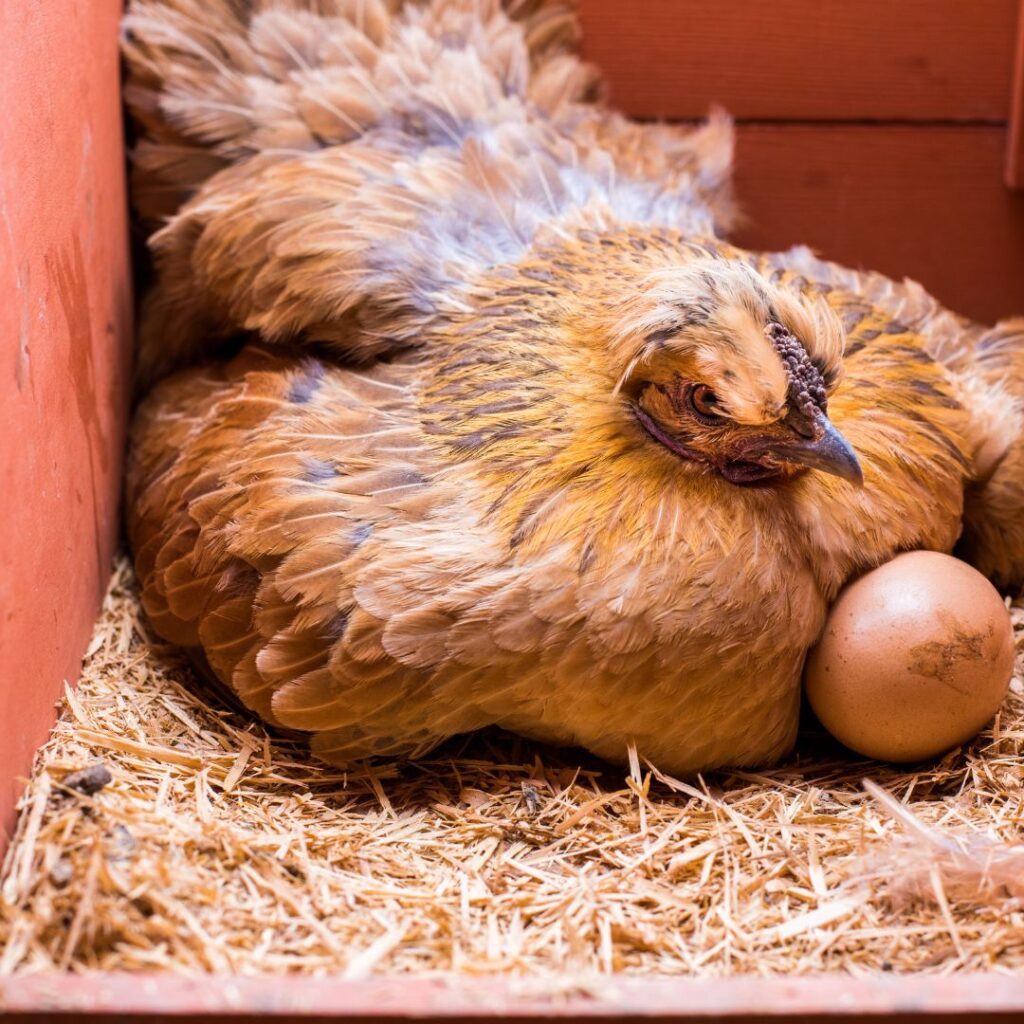
Nesting boxes
For every four hens, one 12×12 nesting box is necessary. Make sure your boxes are cleaned routinely, adding extra bedding for all that egg laying.
If your New Hampshire hen goes broody, and you want to have baby chicks, this place will be where they will tend to their eggs while waiting for them to hatch.
If you have fertilized eggs (remember, New Hampshire rooster required!) and want to hatch but none of your hens go broody, you’ll need to move these eggs to an incubator.
Feeders and Waterers
Your chickens’ food and water containers should be large enough to hold enough provisions for your entire flock, and you should clean these out every day.
The Chicken Run Space
Provide a minimum of ten to fifteen square feet per New Hampshire chicken. If you are free-ranging your flock, you can keep up to eight to 10 square feet per chicken. This is because your free range time will allow additional exercise and outdoor time to help keep your flock at peak health.
Fencing height
Although the New Hampshire chicken can’t fly, the purpose of fencing is also to keep them safe from predators. A recommended 6-foot high fence is always the best choice for protecting a flock in their run area.
To keep predators at bay and chickens safe, chicken runs should be enclosed with sturdy Chicken wire or another type of fencing. The Runs themselves should be designed so escape becomes impossible; this can be achieved by ensuring no fencing gaps.
Overhead fencing using a lighter-weight cage wire or hardware cloth will keep predators from entering overhead.
Dust Bath
Mites and lice are more common in chickens during the summer months. To prevent your flock from getting these parasites, make sure they have a dedicated dust bath area. (see more on dust baths here)
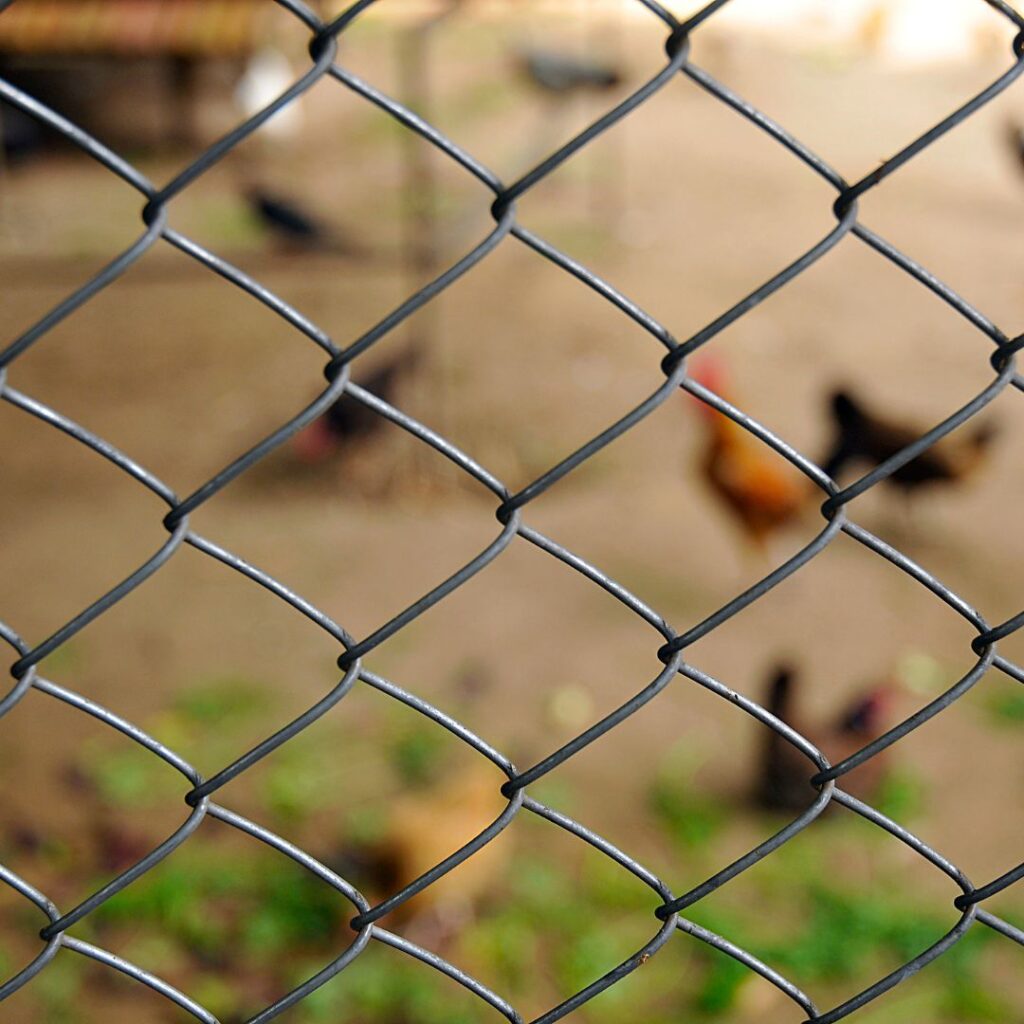
Free-Range and Foraging
New Hampshire chickens are good for free-range flocks. However, they cannot fly to safety if a predator arrives, so free-ranging time should be supervised or in a safe, secure yard.
Free range time to forage among your yard is super healthy for chickens as well as a significant help in reducing pesky things like ticks and grubs from your yard.
Is The New Hampshire Chicken Breed Cold Hardy?
Having been developed by the Rhode Island Red breed, the New Hampshire chicken is known for good cold tolerance.
While their deep, broad body and thick feathers make this breed cold-hardy, their single comb is susceptible to frostbite more so than a rose comb. Proper winter care for your chickens is essential to keeping a healthy flock.
Summers can also be challenging on those full bodies and thick feathers. Prepare your coop and outdoor run space well, and your New Hampshire chickens will live the good life year-round.
Coop Prep – Prepare your chicken coop for winter by ensuring it is well-ventilated, has plenty of bedding, and is free of drafts. Live in a cold climate? Take these additional steps to care for your chickens during the colder months.
Coop Prep for chickens in hot temperatures: Before the summer heat arrives, take these steps to get your chicken coop ready:
Make sure it is well-ventilated by checking for any areas that need patching. Flies are attracted to dirty conditions, so cleanliness is critical.
If you can, leave doors open or put up a screen door or window in larger open areas for airflow.
Waterers – In winter, chicken waterers need to be frequently changed as the cold temperatures will freeze the water. If you’d like, you could buy a heated waterer or bowl warmer instead–keep in mind that your coop would need a reliable power source.
Poultry require access to clean, cool water at all times. Consider adding additional waterers and placing ice cubes in them to help keep the water fresh and cool as the ice melts.
Frostbite is a severe condition for chickens that can cause severe health problems, even death. To prevent frostbite, prepare the coop; proper ventilation will reduce moisture. You can further protect your New Hampshire Hen and New Hampshire rooster by coating their combs and wattles with a light layer of petroleum jelly.
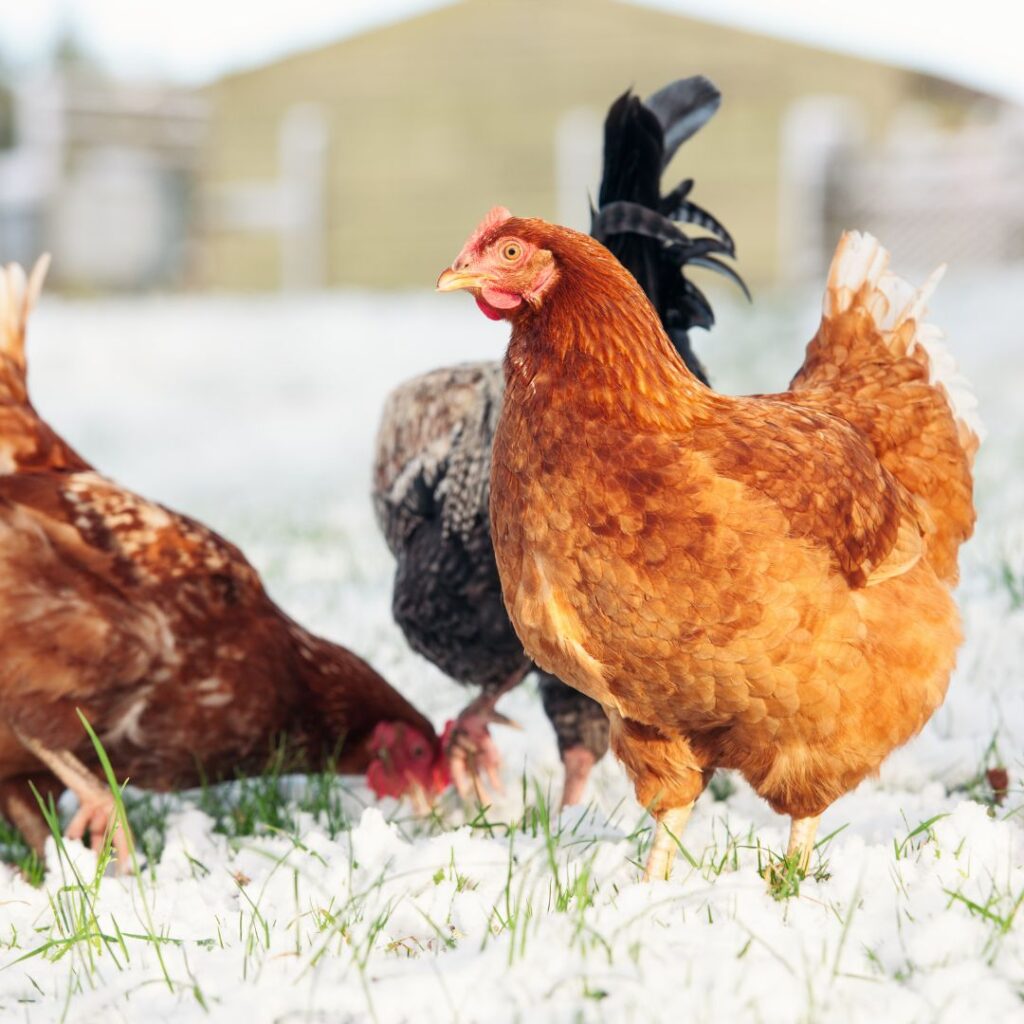
Are The New Hampshire Reds Good Urban (City) Chickens?
This is an easy ‘no.’ Most cities have laws with ‘noisy’ chickens and other animals (I know, why doesn’t this count with the barking dog). You will most certainly be looking for problems if you try to raise a flock of New Hampshire chickens in a well-populated neighborhood. Many other breeds do well in urban settings; consider one of these:
- Ameraucana
- Australorp
- Barred Plymouth Rock
- Brahma
- Cochin
- Marans
- Orpington
- Rhode Island Red
- Sussex
- Turken
- Wyandotte
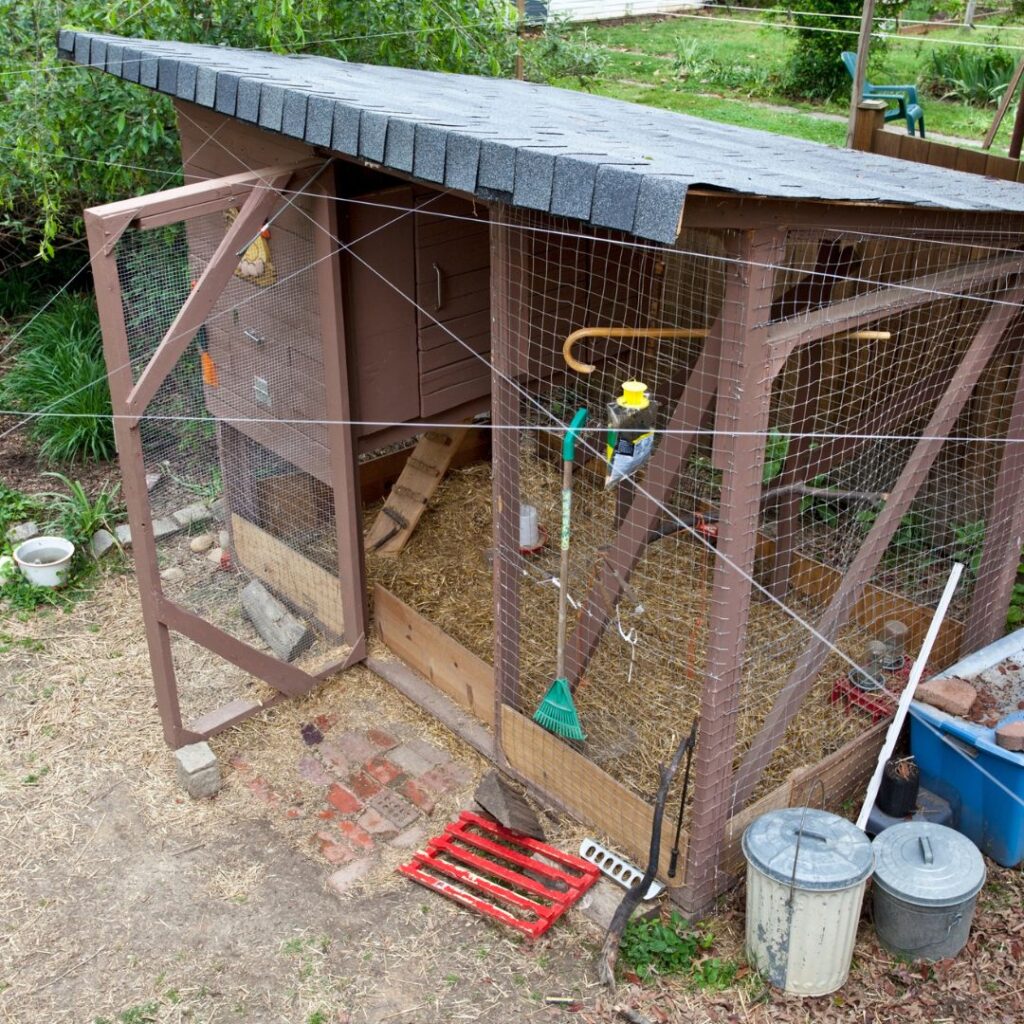
Life Expectancy of the New Hampshire Chicken
The life expectancy of the New Hampshire chicken is around seven years. Historically a popular breed amongst homesteaders and small farmers, it is known for being extremely hardy and resistant to most diseases or ailments.
Is The New Hampshire Right For A Backyard Chicken Keeper & Hobby Farm?
The New Hampshire chicken is a good meat bird and a dual-purpose hen that provides many eggs. The selective breeding to create this ideal dual-purpose chicken breed gives it many great qualities wanted by homesteaders, backyard chicken keeper homes, and small-scale hobby farms.
This breed will provide sustenance for your family with their tasty meat production and farm-fresh eggs for many years. They are bred to grow faster than most other chickens, so you’ll reap the benefits much sooner than with other chickens.
They are hardy birds, not likely to get sick as they have no known inherited disease traits.
If you’re looking for a ‘working’ farm animal that will earn its keep, the New Hampshire Reds are an ideal choice.


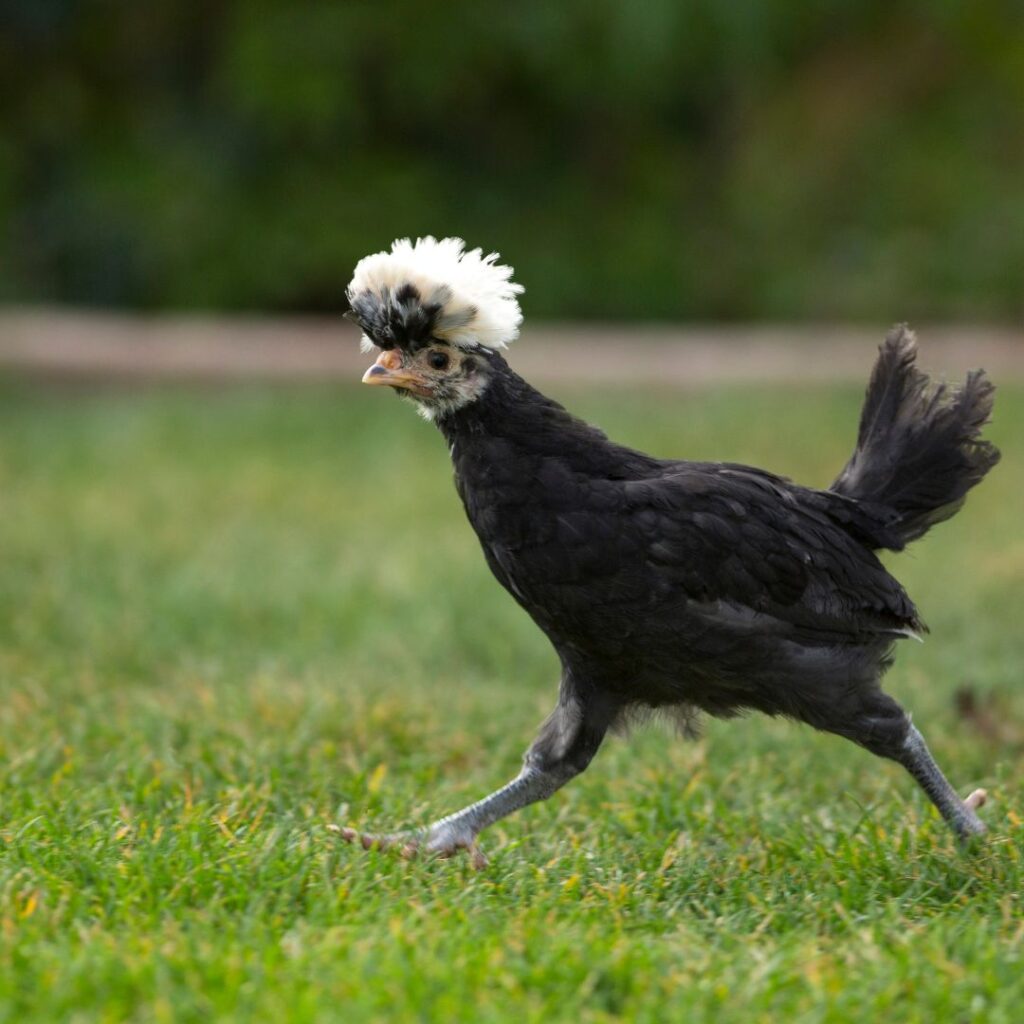

Pingback: 15+ Best Egg Laying Chicken Breeds; Qty, Color, Size Of Eggs
Pingback: The Black Star Chicken; About Black Sex Links & Sex Link Chickens
Pingback: Delaware Chicken Breed; Everything You Need To Know
Pingback: Do Chickens Lay Eggs In Winter Months? How To Encourage Egg Laying Year Round